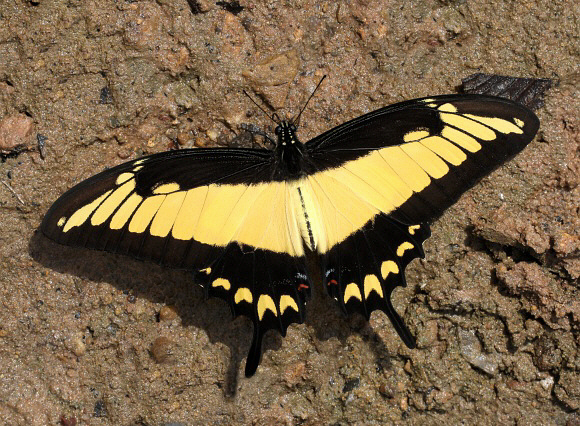
Introduction
The Papilionidae is comprised of about 600 known species. They are found throughout the world in almost every environment including deserts, mountains, grasslands, tropical rainforests, temperate woodlands, meadows, marshes and coastal dunes.
There are 3 subfamilies. The Parnassiinae consists of about 50 species. They are known as Apollos and breed mainly in mountainous areas of the northern hemisphere. The Papilioninae comprises of about 550 species distributed across the world, and includes the Swallowtails and Dragontails, and the giant Birdwings of south-east Asia. The other subfamily Baroniinae consists of a single species Baronia brevicornis which is endemic to the mountains of western Mexico.
Heraclides comprises of 28 species, and is the neotropical “sister” genus of the Holarctic Papilio, to which the European Swallowtail Papilio machaon, and the North American Black Swallowtail Papilio polyxenes belong. Some of the Heraclides species are marked with cream spots and bands, and have obvious affinities with their Holarctic counterparts. Others including anchisiades and the female of torquatus are Parides mimics, with pink patches on their hindwings. H. astyalus is very similar to androgeus, but in the latter the creamy crescents on the upperside hindwings are greatly reduced.
Heraclides astyalus is a very widespread insect whose 6 subspecies are found variously from Texas to Argentina and Paraguay.
Habitats
This species is found in many different habitats including rainforest, cloudforest, deciduous forest, orchards and suburban zones at altitudes between sea level and about 1200m.
Lifecycle
To be completed.
Adult behaviour
The butterflies are only active in bright sunshine. Both sexes visit Lantana flowers. Males are more commonly seen mud-puddling on river beaches and at the edges of streams and pools. They are usually seen singly, often amidst aggregations of Pierids.
When feeding either at flowers or on the ground, the wings are kept constantly fluttering – a feature common to Swallowtails throughout the world. After several minutes, if undisturbed, they eventually relax and fully outspread their wings.
